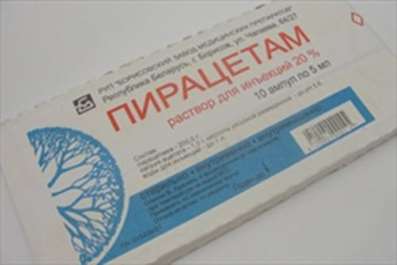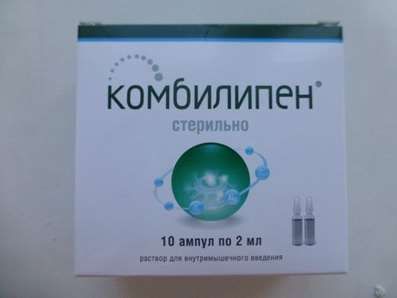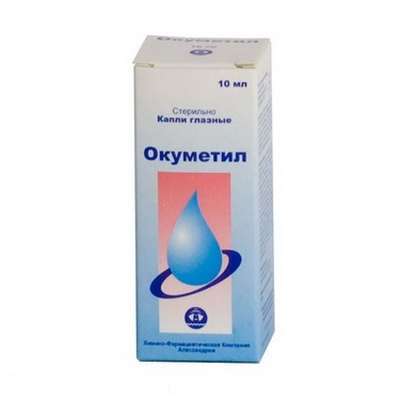Hypersomnia
03 Feb 2017
Somnology Dr. Doping tells about daytime sleepiness, narcolepsy, and the role of the hypothalamus in the alternation of phases of sleep.
Hypersomnia - the Greek word, which means daytime sleepiness. The prefix hyper- means 'excess, excess' and somnus - 'a dream'. Over-sleep, excessive inclination to sleep onset in conditions that are not conducive to this - it is the definition of a day of excessive sleepiness, because at night it is okay, at night we have to spend some time in a dream, and when we feel the inclination to sleep onset, that usually give in to this desire, get enough sleep and feel refreshed in the morning and full of energy.
To improve your sleep – Selank, Afobazole, Picamilon.
Why is the wrong time to sleep we may experience drowsiness (most call it a day)? This may be due either to social causes, when a person artificially deprived of sleep, in order to achieve any benefits for himself and the causes of health - some disorders that cause sleep disorders. Because of this, people do not allow to perform the function of restoring sleep and daytime sleepiness gets later as a consequence of sleep lack.
How can we assess this person has excessive sleepiness or not? The easiest way to do it in appearance. If we see a child who is naughty, t eyes, crying, we can assume that he wants to sleep. For the adult equivalent of sleepiness is the involuntary closing of the eyes, can even be automatic disconnection of speech, relaxed posture - all equivalents readiness for sleep onset.
There are more accurate methods that make it possible to evaluate, have this person or not excessive sleepiness. used some of the most popular questionnaires that evaluate sleepiness in the world: there are Carolingian Sleepiness Scale, Stanford has. The most popular scale evaluation of sleepiness is a so-called Epford scale, which was developed in a hospital Epford in Melbourne (Australia), it enjoys the majority of experts who are working in this direction.
According to this scale, the subject is asked to answer a few questions about whether he feels sleepy in standard situations: driving a car while riding, driving a car in traffic, waiting for someone during a meal, during a conversation with someone. But it should be a very strong sleepiness. If the subject is gaining a certain amount of points on this scale, it is mild, moderate or severe degree of sleepiness. The scale proved to be very convenient for selection for further studies of people who have a real sleepy, and not think about how they feel weak because they want to sleep.
There are more accurate methods for the objective evaluation of sleepiness. in lighting conditions Measurement method pupil width fluctuations slit lamp - the most accurate method of assessing sleepiness - called coreometry. It is based on the fact that the more a person wants to sleep, the more it activates the parasympathetic part of the autonomic nervous system, which is responsible for relaxation, recovery of the body. Just activation can be caught with the help of this test, the parasympathetic part of the autonomic nervous system, observing the change in pupil diameter. When illuminated by a slit lamp begins pupillary cycle, when the pupil expands and narrows. The more of these waves changes in pupil diameter, the more a person drowsy. This test is used to select the hazardous occupations of people who can not currently in the service or work: they clearly expressed drowsiness, they can make mistakes.
In medical practice, use a different, more sophisticated test called "multiple sleep latency test" - a variant of polysomnography. sleep study, which is not done in the night and in the daytime. Man put to bed several times during the day - this is usually five times at intervals of two hours - and watch how quickly he falls asleep. Then five episodes averaged and estimated time to fall asleep. It was found that in people who have severe sleep disorders, resulting in a violation of the waking day. In people who have a particular disease, accompanied by daytime sleepiness, sleep time greatly reduced. For example, a healthy young person can remain for 20 minutes during the day in bed and unable to sleep. And the person with the disease, which is called narcolepsy, sleep less than 8 minutes, then he has a great sleep pressure all the time he would not mind to sleep, do not mind to go to sleep.
The probability of occurrence of drowsiness at any given time of the day is determined by several models that are associated with an explanation of why sleep comes at the same time, and ends in another. The most common is the model of the two processes, which suggests that the probability of the onset of sleep at any time - at night, in the afternoon, in the morning, in the evening - is determined by the interaction of two key mechanisms in the human brain.
One mechanism - circadian, circadian - a change in brain activity for 24 hours. In the morning we are not very active, walk around for dinner in the evening more and more tired, and so it goes on every day. It is one component, chronobiological and the second component - the time that we do not sleep. The more we do not sleep, the more pressure builds up sleep and the more we want to sleep - it usually comes at the end of the period of daylight in the evening. When the pressure is great and sleep our day daily activity has passed its peak and is declining as these two processes are added together, the man goes to sleep - usually in the evening.
Why do people fall asleep during the day? For example, if it is not slept the night and sleep he pressure overnight not decreased and remains at a significant level. Therefore, people have to get up in the morning to work, not having slept their required 8 hours. When the peak of brain activity, which is determined chronobiological mechanism passes a certain point, is winding down, the pressure of sleep makes a person ahead of time to go to sleep. If he does something more: lie down, turn off the lights, close your eyes, it really can be very easy to fall asleep, because in the evening and in the morning he had not slept. This is the simplest explanation.
There are more complex explanation: two sleep management mechanism imposed other brain activity cycles that are important, because, when they began to watch multiple test sleep latency, it turned out that is not so simple, and there is not one only peak frequency of sleep, in the evening, and there even the peak of sleep during the daytime, in the region of 15:30. In the afternoon, in the majority of healthy young people observed the acceleration of time to fall asleep, because there is still a high-speed mechanisms, which have a period of at 24 hours and 12 hours and a half days.
Moreover, suppose another mechanism ninety minute changes in brain activity, which is manifested as night sleep stage changes. We know that the stages of sleep are repeated every half hour - it is called the period of sleep. This is normal, but nobody knows what it actually needs. This hour and a half repeat, most likely takes place in the daytime and also applied to the rest of the rhythms of brain activity, and so we can feel sleepy at certain times during the day, even if we slept. Half an hour later we are it probably will not feel like they know many of the students who sit on uninteresting lectures. They were surprised to find themselves sleeping, and sleep they no longer want in 15 minutes.
What is the most common cause of daytime sleepiness in the general population? The most common cause - the so-called insufficient amount of sleep syndrome, also called the Edison effect. It is to blame Thomas Alva Edison - the famous inventor who perfected the famous light bulb filament to such an extent that it could produce a pipelined manner. Thomas Edison has allowed man to turn night into day, and the person has had an opportunity to take your time on sleep in favor of some other things: entertainment, additional work. Thus, people were able to artificially limit yourself in a dream. As a result, it leads in a sufficiently large part of the population - its size is estimated at 5% - for the subsequent development of sleepiness during the day. If we make a daily test to fall asleep for such people, they go to sleep earlier than expected. Not 15, as expected, on average, and in 10 minutes because they have a fairly short time of sleep, which they carried out their own fault. This reason conditionally health, but rather a social cause.
There are medical reasons that cause drowsiness, and usually it's all kinds of sleep disorders. This insomnia when a person is not getting enough sleep for various reasons - reasons often psychogenic. There is a problem of snoring and sleep apnea, breathing during sleep delay. Because of this, people always waking up, emerging from a deep sleep in the surface and also can not get their normal deep sleep. No matter how much sleep, he feels the desire to sleep during the day because it lacks. These disorders are considered a single group of sleep disorders.
And in the group treated hypersomnia disorders, mainly a manifestation of which is excessive sleepiness. The most famous of these diseases - narcolepsy (νάρκη - this 'confluence, stupor, off consciousness' and λῆψις - 'attack'). This disease is quite rare: per 100 000 people accounting for up to five cases, but these patients are found. And this is their main problem: they always do not mind to sleep. Drowsiness have intensified in the afternoon, and they are unable to function effectively because begin to fall asleep during the monotonous activity.
In addition, when another important manifestation of narcolepsy is a loss of muscle tone while experiencing strong emotions. When we say that during laughter under-bending knees, is a figurative expression. But in people with narcolepsy under-bending they do, because they incorrectly regulated alternating phases of sleep. There main stage of slow wave sleep - the body is restored physically and is the phase of REM sleep, when the body recovers more mental functions, we have dreams and dreams. And when REM sleep occurs at the wrong time, for example during wakefulness on the background of emotions, then, that we would not have experienced the content of our dreams, do not jump, do not fly in dreams and reality, nature is conceived at this time to turn off our muscle tone. If narcolepsy is so dramatically different muscle tone, when people laugh. This rare disease is amazing.
Now its development is associated with damage to the specific development of neurons in the hypothalamus. These neurons should produce a chemical called hypocretin (or orexin) of the exciting nature, which is responsible for the correct sequence of phases of sleep. Narcolepsy is a classic model of hypersomnia. There are hypersomnia secondary character that develops against the backdrop of various diseases. For example, we know that elderly people do not sleep off in the daytime. It turns out that for some age diseases, Parkinson's disease actually affects those parts of the brain that stimulate the cerebral cortex. When this stimulation is not enough, these people are not averse to once again sleep. Boxers have the term "post-traumatic hypersomnia," when they get a lot of micro-concussion that are not even accompanied by a knockdown. They die of the neurons that have aphrodisiac effects, and they also at dusk career are prone to excessive sleep.
There are a lot of other diseases, such as stroke, which can also be accompanied by excessive sleepiness. But in most real life, we do not meet with the disease called hypersomnia, and with a change in lifestyle. When people were able to take away from the dream time and add it to entertainment or work - is insufficient sleep syndrome, or the Edison effect.

 Cart
Cart





